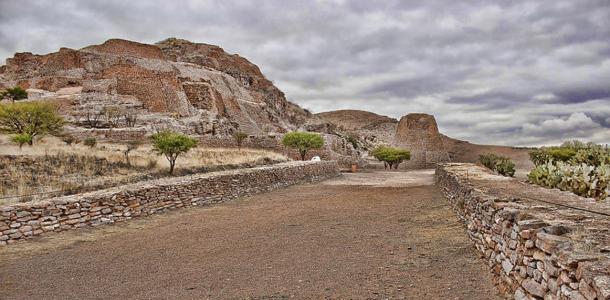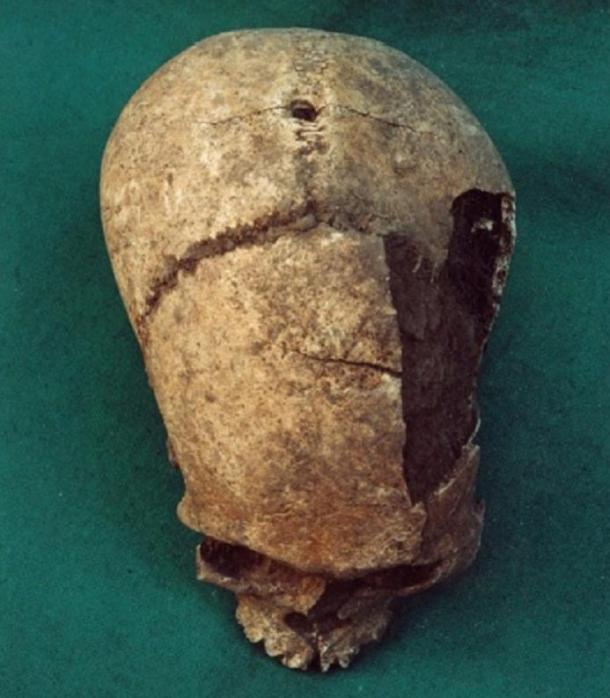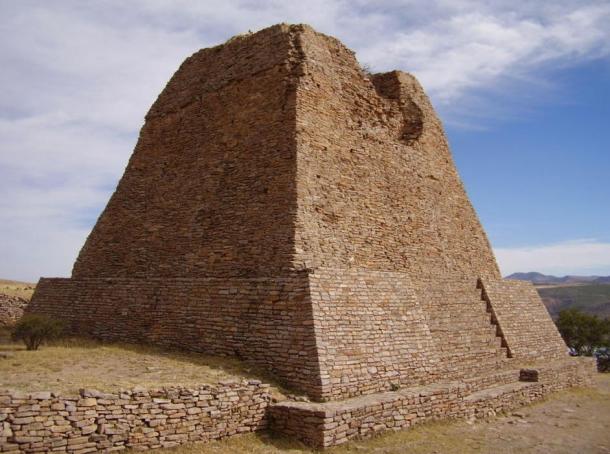
La Quemada civilization in Mexico ate their enemies and displayed their bones
A new study that analyzed human bones found at the La Quemada archaeological site in Mexico, has revealed that the ancient people that inhabited the site 1,500 years ago ate their enemies and hung up their bones and skulls for display.
La Quemada is a Mesoamerican site, located in the Villanueva Municipality, in the state of Zacatecas, Mexico. Research suggests it was first occupied around 300 AD, and reached its peak between 600 and 850 AD. It became a leading center that connected 220 settlements via a network of roads to circulate taxes and resources that sustained the population and formed processional routes to honor their deities. La Quemada represents the most significant monumental settlement in north central Mexico for its architecture. At the site there is a large residential area with square columns, a ball game court, and a pyramidal base called a Votive Pyramid.

La Quemada archaeological site (Wikimedia Commons)
La Quemada is considered somewhat of an enigma among historians and archaeologists. Given the distance between La Quemada and the center of Mesoamerica, its role and cultural background has been subject of many different interpretations. Some have identified it as the place of the legendary Chicomostoc, where the Aztecs were said to have remained for nine years during their voyage to Anahuac, the heartland of Aztec Mexico. Others have associated it with a Caxcan site, a Teotihuacán fortress, a Tarascan centre, a fort against Chichimeca intruders, or a Toltec trading post.
- The Lost City of Aztlan – Legendary Homeland of the Aztecs
- The Aztec Calendar Wheel and the Philosophy of Time
- Aztec Death Whistles Sound like Human Screams and May Have Been Used as Psychological Warfare
While researchers do not yet have all the answers, a new study published in the journal Proceedings of the National Academy of Sciences has uncovered a new grisly piece of information about this mysterious site – they ate their enemies and hung up their remains for display.
A pair of archaeologists from Arizona State University studied bones found inside and outside the compound, which dated to between 500 and 900 AD. They found that the outdoor bones show signs of cut marks, bone splinters, and burning, all characteristics consistent with cannibalism. In addition, some of the skulls were found with holes drilled in the center, suggesting they belonged to defeated enemies whose heads had been placed on public display outside the temple walls.

A skull with a hole drilled in the center, which is believed to have been hung from the front wall of the Temple (Nelson et al/PNAS)
On the other hand, bones found inside the compound show signs of disarticulation and defleshing after some period of post-mortem desiccation and decay. They also represent all ages and both males and females, suggesting the purpose of the defleshing was ancestor veneration.
- Prehistoric Anatolians removed flesh from bones to ease transition to death
- First evidence of defleshing of human bones in Neolithic Europe found in Italy cave
- Archaeologist finds defleshed human bones in ancient religious complex in Bolivia
The researchers believe the indoor bones belonged to the local residents of La Quemada, while the outdoor bones were of ethnic others, who came to attack.
“During the time when the people were living there, the researchers note, the area was under stress, enduring upheaval due to rapid change—Teotihuacan city had collapsed and a new society was under development, one that consisted of multiple smaller scale groups living across the Northern Frontier. That inevitably led to violence, which the researchers note, can be seen in how the bodies of the vanquished were treated,” reportsPhys.org. “Other evidence of the violence that occurred was the architecture itself, fortresses meant to keep invaders at bay.”

The researchers believe the architecture at La Quemada suggests a defensive function. (Wikimedia Commons)
The researchers will now carry out DNA analyses of the skeletal samples to determine the ethnic origins of the two sets of bones, to determine whether their inferences of interethnic violence is correct.
Featured image: The Votive Pyramid of the archeological zone of La Quemada, Mexico (Wikimedia Commons)
















Comments
This is obviously a long head (https://www.ancient-origins.net/sites/default/files/styles/large/public/...). More European than the flatter-headed people who were there when the Spaniards arrived. Maybe Atlantean/Ice Age survivors who were overrun? Or what?
Nobody gets paid to tell the truth.